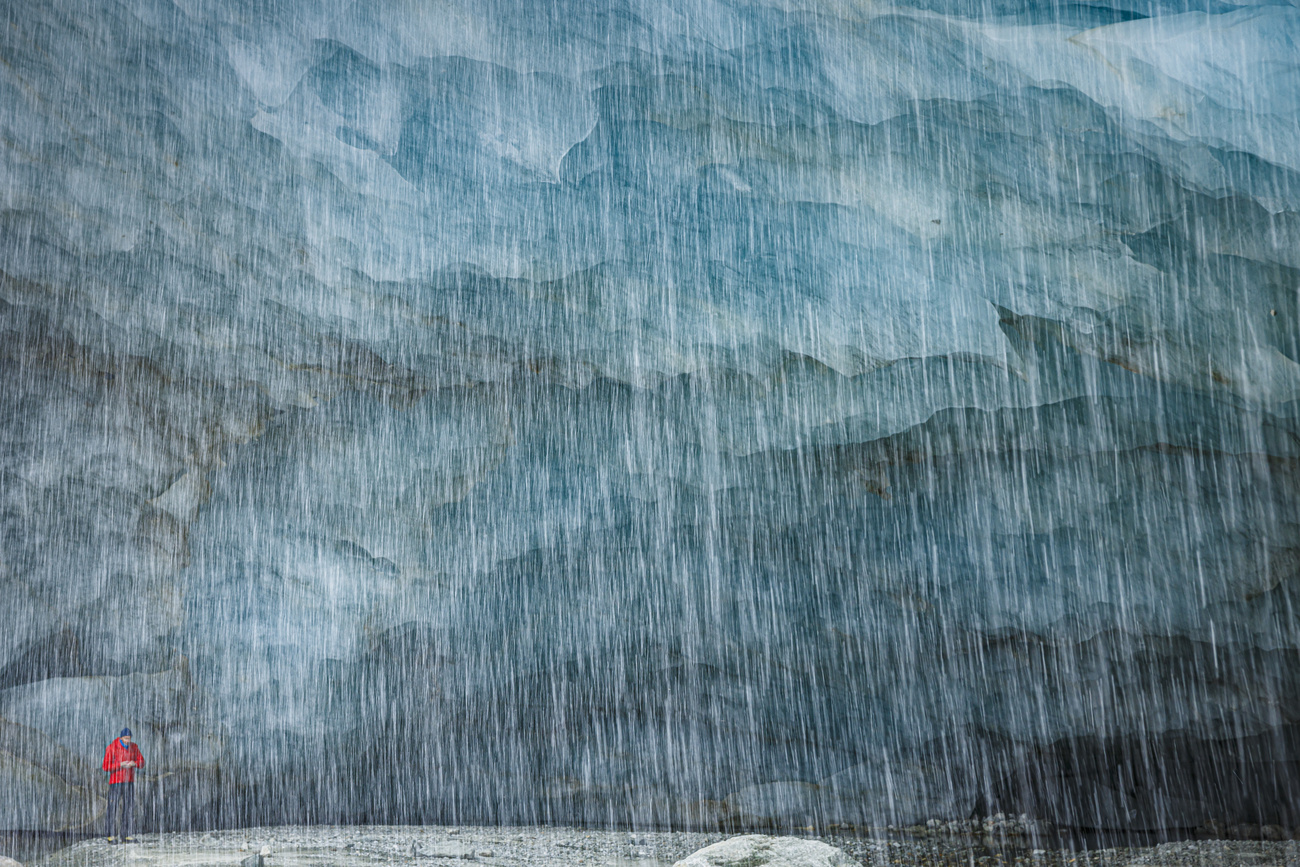Manon exposes herself in New York

The work of Swiss artist Manon has opened to rave reviews at the Swiss Institute of Contemporary Art in New York City.
The overview of her work – the first in the United States – includes photographs, both old and new, as well as two installations from the 1970s.
“I don’t like showing my old work too much, such as the installations, because it’s not so creative for me now as it was in the beginning, but I’m happy to be here,” Manon told swissinfo.
Manon, who is often compared with artists such as Cindy Sherman and Hannah Wilke, is considered a pioneer of female body and performance art.
Since the beginning of her career, Manon has addressed sexual, identity and gender stereotypes and has often been the central model in her own photographs.
One of the installations at the show – “The Salmon-Colored Boudoir (1974)” – is a replica of the artist’s bedroom in Zurich – featuring furniture, props, clothes and memorabilia.
“You feel like you’re in the room of someone you really want to meet,” visitor Lisa Giacobini told swissinfo.
The circular room, draped in a silky salmon-coloured fabric, is filled with pearls, furs, feathers, candles, shells, makeup utensils, and mirrors on all sides.
“She seems very original by looking at this room. She has such an imagination and an interesting personality,” Giacobini said.
The End of Lola Montez
The other installation on display – “The End of Lola Montez (1975)” – features a cage in a dark room with a chair, chains, a blinking white overhead light, and has a sadomasochistic feel.
The work was inspired by the story of Lola Montez, a mistress of King Ludwig I of Bavaria. After Ludwig abdicated, Montez fled and allowed herself to be exhibited in an animal cage.
For her 1975 performance of Lola Montez, Manon, who suffers from claustrophobia, had herself chained to a chair while wearing a dominatrix costume.
“It was probably a challenge for her that gave her pleasure in some way. Maybe it has to do with the fight between seduction and pleasure and pain,” Samantha Mclane told swissinfo.
For her part, Manon said that her performance back in the 1970s was more pain than pleasure due to her fear of being in enclosed spaces. “The first time when I was attached and locked in, it was very difficult. And it did not get easier over time,” she said.
Ahead of her time
Mclane, as well as a number of other people attending the exhibition, felt that as an artist and a woman, Manon was ahead of her time.
“During the 1970s it must have been more difficult for a woman to be very outspoken about these type of dark feelings,” Mclane said.
People were also intrigued by Manon’s ability to successfully make herself the centre theme of her work.
“I think that’s the most impressive thing about her. She invented herself as a piece of art,” said Lukas Wolfensberger.
Manon continues to be the central figure in her work. In “She Was Once Miss Rimini (2003),” the artist is depicted as various characters – raging from a psychiatric patient to an aerobics instructor to a glamorous diva – in a series of about 50 photos.
Manon said the photos, which appear in a seven-minute video, were inspired by a story that she invented about a woman who wins a small beauty contest in the 1970s in Rimini, Italy.
“Perhaps the contest changes her life. And I thought, where is that woman now, 30 years later? There are a number of possibilities, depending on what type of life she had,” she said.
The exhibition of Manon’s work runs until June 30.
Karin Kamp in New York, swissinfo.ch
In 1972 Manon opened a boutique in Zurich where she sold her own designs. In the early 1970s she began experimenting with photography and immersed herself in Zurich’s subculture.
“The Salmon-Colored Boudoir (1974)” was her first installation and several performances and installations followed. The performance “The Artist is Present (1977)” featured 16 live Manon doubles and took place at several locations.
In 1977, Manon shaved her head, moved to Paris and lived there until 1980. She created a series of performance photographs while there, including “The Gray Wall or 36 Sleepless Nights.”
In 1980 she moved to Geneva, where she continued to work on the theme of identity construction. In 1983 she created “The Double Room” and “Turning Circles”, photographic experiments, which examined the relationship between the sexes.
Manon withdrew into her own private life, and emerged in 1990 with a new installation “The Room of Women”. During the 1990s her installations and photographs focused on the desire for eternal youth. Since then, she has continued to work with photography, and the theme of identity.
Manon’s work has won several prizes, most recently, in 2008, the Prix Meret Oppenheim.

In compliance with the JTI standards
More: SWI swissinfo.ch certified by the Journalism Trust Initiative












You can find an overview of ongoing debates with our journalists here . Please join us!
If you want to start a conversation about a topic raised in this article or want to report factual errors, email us at english@swissinfo.ch.